Raise a Glass: UM Class on Alcohol One for the Times
MISSOULA – Alcohol has intoxicated Americans since the dawn of the republic, and a University of Montana course details how booze has spilled into society’s consciousness up to the present with a special history project.
The class, Intoxication Nation, is taught by Kyle Volk, chair of UM’s Department of History, who decided to “liven things up a bit” from traditional courses on American history.
Open to up to 35 students from all majors, this is the second year the class has produced oral histories – projects that capture living history. For the course, students complete a “Wet Missoula” project by interviewing subjects involved in the local alcohol scene (this year on Zoom) and creating a written transcript for future history.
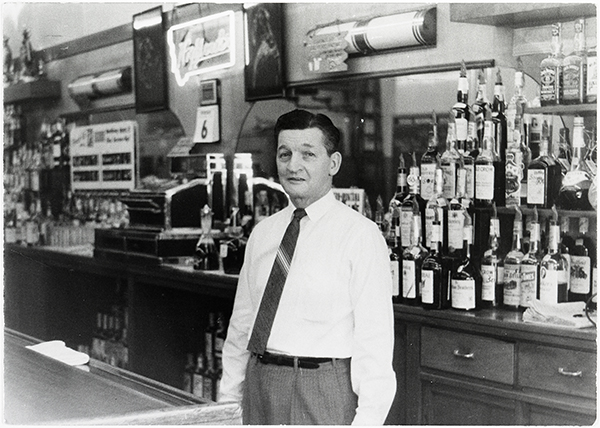
“Students learn about their community and the people living in it,” Volk said. “Through this process, they also learn about the business of alcohol and potential careers in the field – an enormous sector of the economy with all sorts of possibilities.”
Whether called “booze, demon rum, hooch, poison, liquid courage, firewater” – according to Intoxication Nation’s course description – students in the class trace the saturation of alcohol into the country’s history from its very inception to the cocktail culture of the 1950s.
In the course Volk explores how rum – produced from molasses, a byproduct of sugar production and slave labor – became an essential commodity and object of currency in the 18th-century Atlantic world. Especially because of the fur trade, Native Americans also became rum drinkers. And although everyone knows of “no taxation without representation,” Volk said few are aware that the British empire taxed molasses, and thus rum, before tea.
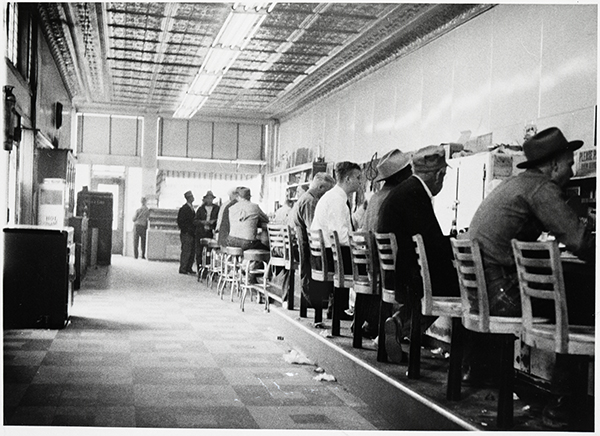
The interior of the Oxford Bar at the corner of Broadway and Higgins at Missoula, pre-1955. The Oxford moved one block north to Pine and Higgins in 1955. (UM Mansfield Library Archives and Special Collections)
As a bonus, students even learn how to throw a good cocktail party – as judged by a cocktail guide from the 1940s. But in the process, and somewhat more soberly, they learn how new modes of socialization emerged as white middle-class Americans flocked to the suburbs after World War II and what American neighborhoods and livability look like today.
Stephen Hayes, a UM student from Denver majoring in history and philosophy with plans to attend law school, said he joined the course to learn about a new piece of American history.
“I thought using alcohol as a lens to study the past was an intriguing approach that would allow me to see portions of American history about which I previously had little understanding,” Hayes said. “Alcohol has been (and remains) an important force in American history, and yet I knew little about how and why that was so.”
Hayes said the course focuses on how Americans’ relationship with alcohol has changed over time – the types of alcohol, how much and where it is consumed – up to the craft alcohol boom today.
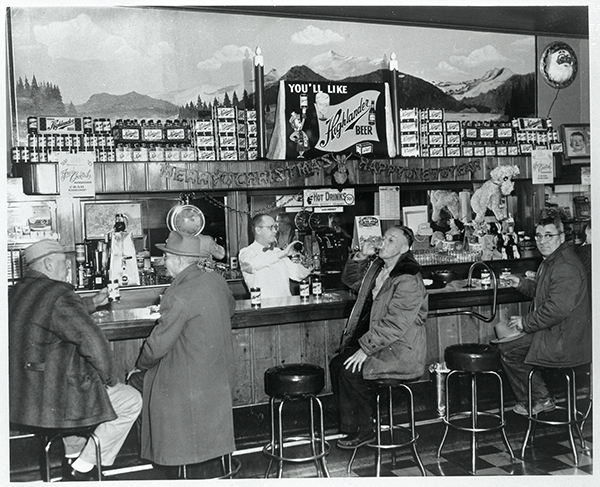
A bartender and four men at a bar in Missoula displaying a Missoula Brewing Company Highlander beer sign circa 1960. (UM's Mansfield Archives and Special Collections)
“The development of craft beer is something that has occurred only since the 1980s,” Hayes said. “It is a recent trend, but, as many a Missoulian could attest, it is a very salient one indeed.”
UM students first interviewed community members on the explosion of Missoula’s craft alcohol scene in 2018. Students examined the science of distillation with the owners of Montgomery Distillery, observed German pub culture at Bayern Brewery and gleaned insights on women-produced cider throughout history at Western Cider in Missoula.
“The idea with this project is for students to help capture the present moment so future researchers and interested members of the public will have special access to information and insights – particularly those that might not be accessible in other sources,” Volk said.
This year, the interviews highlight how COVID-19 impacted alcohol culture and feature Missoula bar and brewery owners, bartenders and servers, an AA member, a recovery counselor, a sales rep for distribution companies and more.
For his “Wet Missoula” project, Hayes interviewed local sales rep Greg Ragan from Intermountain Distributing, a fine wine distributor in western Montana. As more and more Americans stayed home during COVID-19 and bought up wine and beer, wine distributor sales spiked and merchandisers worried about keeping gas stations stocked with beer.
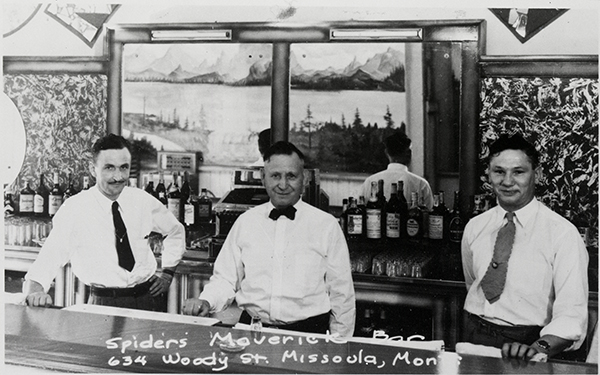
James F. "Spider' McCallum (right) and two other men at his "Maverick Bar" at 634 Woody Street in Missoula in the late 1940s. (UM Mansfield Library's Archives and Special Collections)
Volk said oral history is the perfect way to capture the emotion surrounding what a business has gone through during a pandemic or what it was like to be a server or bartender during shutdowns and mask ordinances.
“I want students to gain an understanding of and appreciation for oral history as a skill and practice among professional historians,” Volk said, “as well as a hands-on appreciation for history in the making – to see history as a living, breathing and fundamentally dynamic force. This is a theme in all my classes, but oral history casts new light on it and gives students capacity to shape future histories by asking questions and recording responses for posterity.”
Capturing oral history is part of the UM History Department’s larger commitment to provide students access to hands-on, community-driven research. Through offering an Oral History Internship and a new Certificate in Public History, the department prepares the histories and historians of the future.
The “Wet Missoula” project will be posted with interview and transcripts to the Mansfield Library’s webpage once complete at https://scholarworks.umt.edu/wetmissoula_oralhistory/.
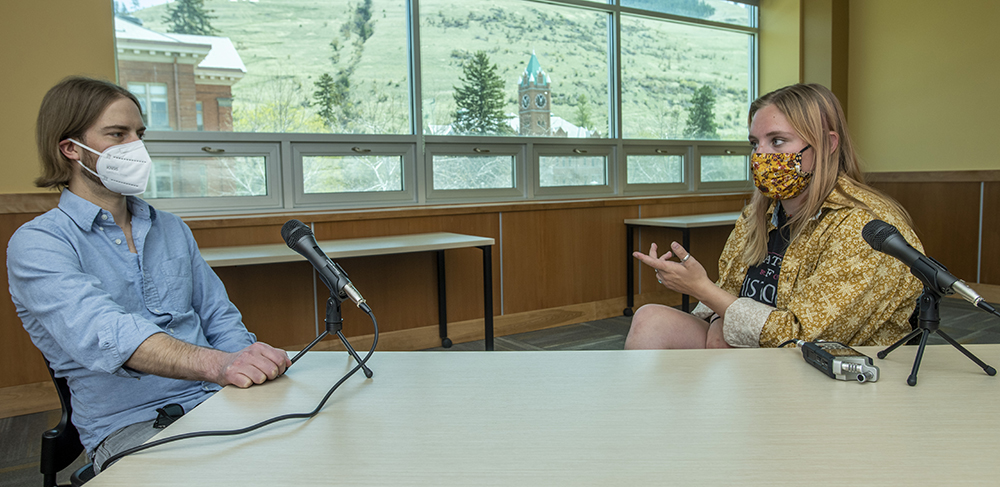
Contact: Kyle Volk, chair and associate professor, UM Department of History, 406-243-2979, kyle.volk@umontana.edu.